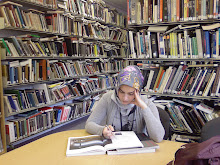
The Book of Kells, the Book of Durrow, the Lindisfarne Gospels and other Celtic manuscripts were written and decorated entirely by natural daylight. According to Marc Drogin in "Medieval Calligraphy" (Dover Books) the monasteries were so fearful of accidental fire that the use of candles or oil lamps was forbidden inside the scriptoriums (writing rooms) and libraries. The scribe worked from dawn till dusk, stopping only for prayer and meals or his turn at the hoe, working in the fields alongside his brethren.
The use of small red dots in Celtic manuscripts does not (contrary to some modern interpretations) represent the "universal life force", but was in fact a decorative device. The technique, known to calligraphers as rubrication, was borrowed by the Celtic monks from Egyptian Coptic Christian manuscripts brought to Ireland by missionaries in the 5th century. The small red dots were used to outline large initials or to make a particular line of text stand out from the page. In later years, Celtic artists elevated the humble red dot into a high art form, creating complex webs of delicate knotwork and even animal interlace.
Before St. Patrick introduced books along with Christianity to Ireland, the Irish had no useful written language. Ogham, a primitive system of slashes and dots, was used to inscribe names on gravesites and standing stones, but proved too cumbersome for everyday use. So when the Roman alphabet was introduced in the fifth century, the Irish embraced it as their own, and even adapted it for the Gaelic tongue to record their ancient myths and legends.
The production of a single copy of the Four Gospels such as the Book of Kells required that the monks keep a herd of as many as 1200 cattle, which also provided food and milk for the monastery. It has been estimated that the Book of Kells originally was written on the skins of about 185 animals. Paper being then unknown, this parchment was their only source of writing material.

The monks who labored daily over their writing tables, endlessly copying out page after page of text, some of which they could barely translate, often grew fatigued and made errors. Just as modern calligraphers do, the scribes occasionally repeated a word or line, made a spelling mistake, and did not notice the error. In the Book of Kells there are numerous places where the red ink of the editor made later corrections to the Latin text. After a day's work was done, the young scribes often penned short notes, prayers or poems in tiny script in the margins. One later scribe finished copying out a text, noting it as: "...very long, very verbose, and very tedious for the scribe."
http://www.mccelticdesign.com/interesting.htm
Michael Carroll Celtic Design
P.O. Box 1371, Addison, IL 60101 USA
630 - 415 - 0511 Phone
© Copyright 1998-2007 Michael Carroll Celtic Design / All Rights Reserved.

No comments:
Post a Comment